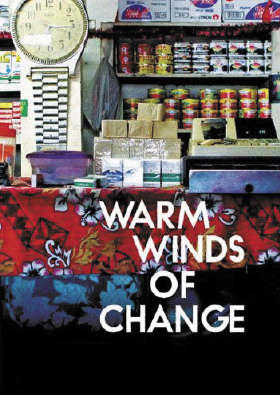Thinking a little beyond 26 July

Masterpiece: Cluny and La’avasa Macpherson’s study of globalisation in contemporary Samoa is described by The Independent as a masterpiece. publisher Auckland University Press
The motorway consultation process is generating considerable debate in the area.
Communities, understandably, are currently focused on what can be done between now and 26 July to influence those making decisions about the design of the proposed Pūhoi–Wellsford motorway.
This is reasonable but rests on several assumptions.
Much discussion around the motorway presumes that the motorway will go ahead. But in the near future the rising costs of building and maintaining infrastructure designed to move freight by road and the application of sustainable development indicators to government infrastructure building, may lead to reconsideration of the efficiency of road transport. Shifting heavy freight from the roads and on to rail and to sea may become an increasingly attractive option for a highly indebted government and may obviate the need for a road built primarily to move freight.
Even if the motorway project was to proceed, much discussion presumes that we will travel in the same ways as we do at present. In the longer term, we may need to consider how we will travel in six years when the motorway nears completion. Steadily increasing prices of fuel and maintenance, and concern with the size of our carbon footprint, have led us to consider ways of reducing the cost of operating our private motor vehicles, and the ways we now use them has changed significantly in the past 10 years.
Our household’s recent experiences led me to consider how technological developments have altered our travel patterns, and how ongoing improvements in these technologies may alter our travel patterns in the medium term.
- Broadband Internet means that I am able to work from home and travel less. Even with a relatively slow broadband connection, I can do a lot of more work at home and send it to clients at virtually no cost. I spend more time at home, avoid the costs of travel, spend less time travelling, and have reduced my carbon footprint in the process. Higher speed broadband, about to be rolled out, will make this option more viable for more people.
- Where we need face-to-face meetings, we currently use either Skype, or Adobe Connect where we need to talk to a number of people at the same time. Each year, these systems become faster and increasingly easy to use and are allowing us to reduce the fuel and time costs of travel. We no longer have to spend 80 minutes travelling from home to the city for a morning meeting. We turn on a computer with a webcam and meet colleagues without any of the energy or time costs of travel and parking.
- It may be that, before long, we will be able to use enhanced versions of these systems to ‘visit’ our lawyers, accountants and even doctors. An accountant suggested to us recently that he was happy to meet clients electronically.
- The growth of Internet retailing and trading has meant that we make fewer shopping trips and that much of what we buy arrives by courier. Our household buys more goods and services on line and have them delivered by couriers. We can avoid the crowded malls and save significant amounts of time, and fuel and reduce our carbon footprint in the process.
- Our increasingly reliable quad bikes, outboard motors, tractors and cars can now be serviced at our homes by mobile service facilities. We no longer have to haul quads and boats to service facilities and we are saving significant amounts of time and fuel and reduce our carbon footprint in the process.
- Our information and entertainment needs may also change. We no longer have to drive 10 minutes each way to get a newspaper: we can download news from the Internet. We no longer have to drive 35 minutes each way to a movie theatre: we can order DVDs, which are delivered by the mailman, from a huge catalogue and watch at times of our choosing. As these technologies improve, we will be able to get together with friends, at times of our choosing, download movies and concerts from servers and watch them without the costs and hassles of travelling to theatres and concert venues.
In short, our patterns of personal travel may change significantly. Those who have to commute may increasingly turn to public transport to move both north and south from the area. Inexpensive, high speed, express bus services with on-board wireless broadband access from Mahurangi West and Pūhoi to North Shore and central city workplaces may become an increasingly attractive alternative to sitting in the traffic in increasingly expensive vehicles in traffic that becomes slower every year.
It seems important to consider whether, as a community, we wish to encourage planners and politicians to incorporate these possibilities into the design on any future motorway. This would involve, at their simplest, the incorporation of bus stations and park and ride facilities at various points on the any new motorway.
This in turn raises the question of our timeframe.
Much current discussion focuses on influencing current local body politicians and planners who have shaped decisions taken to date. But we may wish to consider the longer term: Rodney District Council and Auckland Regional Council will cease to exist in October. Irrespective of how we feel about this, we will become citizens of the new greater Auckland and decisions about what happens in our community will be taken by a new group of local body politicians and planners who will administer the district plan. We may wish to arrange community meetings with ward and local board candidates to ensure that their views on everything from motorway access to the future of the community are known…
before the elections arrive.
